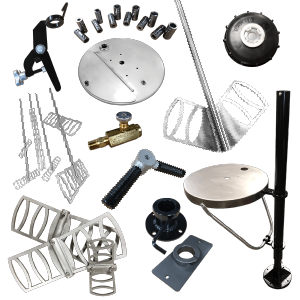Any form of bulk processing machinery intended to mix or blend disparate ingredients into a homogeneous end product is an industrial mixer. All across the world, processing and manufacturing facilities use industrial mixing machines to mix materials like food, chemicals, pharmaceuticals, household goods, plastics, and minerals. Therefore, industrial mixers are an extremely vital component in any industry that manufactures these materials.
It is important to efficiently operate and manage an industrial mixer, but at the same time, the industrial mixer must be one that is suited for the task. Industrial mixers are understandably designed for some specific processes, parameters, and materials, so a guide should be followed to avoid any incompatibility issues.
The following discussion highlights some vital points that should be kept in mind when purchasing an industrial mixer:
Type of Material to Mix
When it comes to choosing an industrial mixer based on the nature of the mixed material, there are several different types of industrial mixers to select from based on the application. Given below is the guideline for selecting the required industrial mixer on the concerned criterion:
Type of Industrial Mixer | Designed For Mixing |
Paddle Mixer | Viscous semi-solid materials |
Horizontal Ribbon Mixer | Food, chemicals, powders |
Tumbler Mixer | Bakery materials |
Drum Mixer | Low & medium viscosity material, i.e. slurry or cement |
Emulsifier | Immiscible liquids, i.e. oils |
Static Mixer | Gasses and liquids |
Volume of Material
The volume of the material holds equal importance in consideration when buying an industrial mixer. The capacity of a mixer is a custom feature that can be set to meet the batch requirement. The batch volume is set to a value, and a mixer with the required capacity to produce that mix can be selected.
As an example, a standard drum mixer can have a capacity of up to 50-100 gallons (190-380 liters). An agitator mixer carries a capacity of 16-264 gallons (60-1000 liters). So, whenever an industrial mixer is to be purchased, one should consider whether batch production is done or continuous production. The volume of each batch should match the capacity of the mixer.
Best Mixer Design
Finding the most suitable mixer design is often considered one of the most vital decisions in the selection process. There are a wide range of industrial mixers available on the market, with each having different working mechanisms, components, and mixing capacities. In addition, materials that can be mixed in the mixer also vary depending on their characteristics or specifications.
Suppose we make a comparison between two prominently utilized mixers, the drum mixer and tote mixer. It comes to attention that both differ from each other in several aspects. One of the distinguishing aspects is the type of material these mixers can mix. Suppose a choice is to be made between these two based on preference. In that case, it is safe to say that the drum mixer can be preferred over the tote mixer because the latter is an economical choice for mixing thin, non-viscous liquids only. In contrast, the drum mixer can be used to mix heavy materials such as concrete, slurries, and cement.
Blade Size Considerations
The blade is one of the most important components of an industrial mixer. The characteristics, types, applications, and materials used are crucial considerations when choosing mixing blades. Other crucial factors to take into account include the mixing blade count, bore size, and outer diameter. When determining the blades of the mixer, the following points must be kept in mind:
- The diameter of the blade should be 1/3th of the diameter of the tank of an industrial mixer.
- For heavier materials such as cement and gravel, the size of the blade should be increased.
- If the viscosity of the mix is under 4000 centipoises, one set of blades should be used; if the viscosity is higher than 4000 centipoises, it should be mixed using two sets of blades 13-15 inches (33-38 cm) apart.
- The material from which the blade is manufactured should be non-reactive to the mix in order to prevent impurification. Moreover, it should be able to bear high temperatures if necessary.
Electric Motor Considerations
When choosing an appropriate motor, it is important to properly grasp torque, energy economy, variable speed, blending environment, and mixer weight. Moreover, air motors are often chosen to operate an industrial mixer. However, the following points must be kept in mind while selecting a motor for an industrial mixer:
- The most significant and precise measurement in mixing is torque. Due to their ability to load torque dynamically, air motors have a clear advantage in industrial mixing. An air motor essentially modifies its torque output to meet the required torque for the application.
- Electric motor mixers with a single speed and direct drive are best suited for mixing recipes with low viscosities or light liquids. The benefit of a pneumatic direct-drive motor mixer is that overloading will not lead to motor failure because the motor will automatically stall under the weight. However, unless they're turning several hundred RPM, pneumatic motors don't produce torque steadily.
- The horsepower of the motor driving the industrial mixer must range between 1/3hp to 5hp.
Accessory Considerations
Industrial mixers in the modern industrial era are often equipped with custom features. Not only do these industrial mixers come with all the basic features, but they include innovative accessories offering a wide range of services.
Needless to say, there are also some important considerations to look for while looking for these accessories in an industrial mixer:
- Add-Ons
The best considerations for add-ons are subjective because every industrial mixer can have different add-ons. However, it’s generally good to consider if the add-on:
- Is of high quality
- Properly enhances the mixing capability of the mixer
- Can increase the capacity/efficiency of the mixer drum
- Gear Reducer
With the use of gears, shaft placement, and gear arrangement, a gear reducer alters the rotational speed. A gear reducer is necessary for more viscous substances. It also converts low torque to high torque in an air/electric motor so the blade can move at the correct speed.
- Elevator
An elevator in an industrial mixer supports industrial mixers on a horizontal surface. They come with an adjustable height and moving speed in order to function smoothly.
- Adjustable Blade
Adjustable blades are necessary when a heavy material is being mixed. Moreover, these adjustable blades work well with either dynamic or continuous mixing.
- Hinged Access
Hinged access in a mixer that produces large batches makes it easy for the mixer to be cleaned, inspected, or emptied.
- Tube or Threaded Pipe
Tubes or threaded pipes are required in an industrial mixer when an effective sealed environment is needed for transporting and mixing gasses, oils, and liquids.





